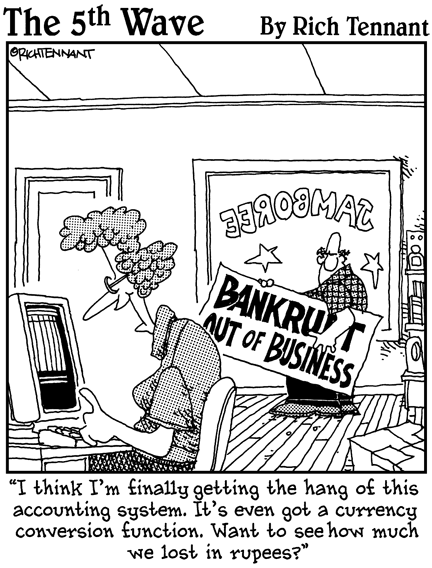Part II
Preparing and Using Financial Statements

In this part . . .
I introduce the three financial statements: the income statement, the balance sheet, and the statement of cash flows. Companies use these financial statements to make important operating decisions. Potential investors and creditors also use them to decide whether to do business with the company. You can also use them to see how investments grow over time.
Kicking off this part is the income statement, which shows a company’s revenue and expenses. This chapter gives you an overview on how to prepare an income statement and highlights the difference in setting up the income statement in a single- or multiple-step format. You also find out how to condense the income statement, and you see what happens if you have other comprehensive income, an item that normally shows up on the balance sheet instead of the income statement.
You explore each operating section of the income statement. Plus, you find out about irregular items that sometimes show up on the income statement, as well as special items such as allocating income tax expense and figuring earnings per share.
Chapter 6 provides a brief overview of the balance sheet, the financial statement that shows a company’s assets, liabilities, and equity. Looking at the balance sheet, you can see how much debt the business owes and what resources it has to pay it. ...
Get Intermediate Accounting For Dummies now with the O’Reilly learning platform.
O’Reilly members experience books, live events, courses curated by job role, and more from O’Reilly and nearly 200 top publishers.

